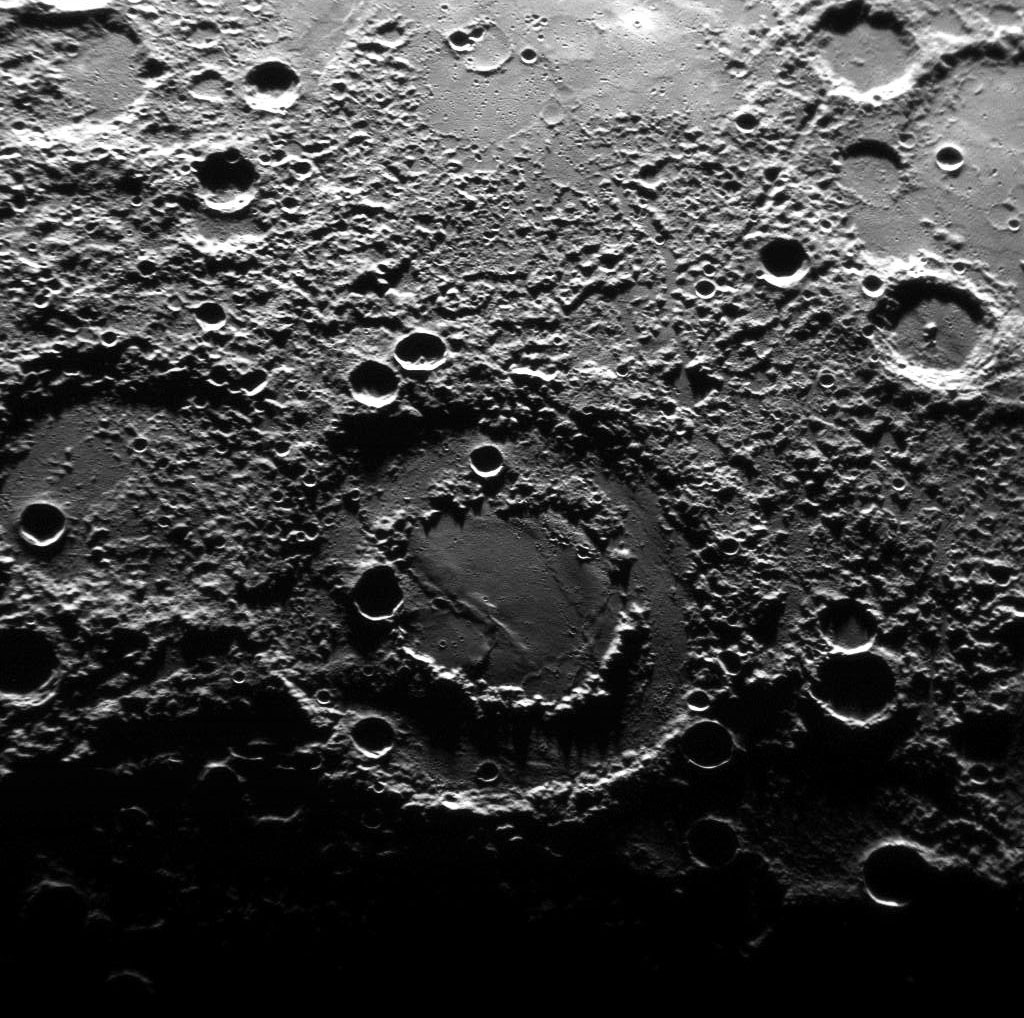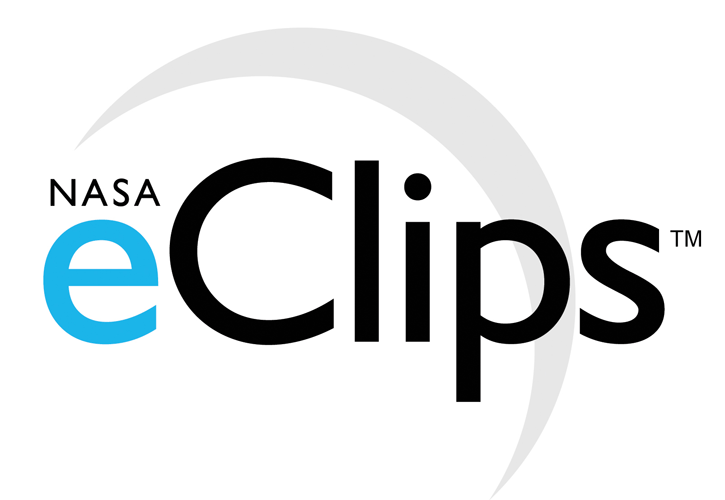
|
MESSENGER Explores the Planet Mercury |
||||||||
|
|||||||||
 |

Mathematics Skill or Topic Area:
Ratios, Propotions and Similarity
Next Gen Science Standards ESS1: Earth’s Place in the Universe; ETS2: Links Among Engineering, Technology, Science, and Society
Common Core ELA for Science: RST.6-8.2. Determine the central ideas or conclusions of a text; provide an accurate summary of the text distinct from prior knowledge or opinions. RST.6-8.8. Distinguish among facts, reasoned judgment based on research findings, and speculation in a text. RST.6-8.9. Compare and contrast the information gained from experiments, simulations, video, or multimedia sources with that gained from reading a text on the same topic.
Common Core Math Standard: CC.8.G.4: Understand that a two-dimensional figure is similar to another if the second can be obtained from the first by a sequence of rotations, reflections, translations, and dilations; given two similar two-dimensional figures, describe a sequence that exhibits the similarity between them. CC.8.G.9: Know the formulas for the volumes of cones, cylinders, and spheres and use them to solve real-world and mathematical problems.

Video Engagement: Mercury’s MESSENGER Reveals Mysteries How long is a day on Mercury? Why does the planet have a 600 degree range in temperature? MESSENGER, NASA’s first mission to Mercury in 30 years, will capture stunning imagery, determine the composition of the surface and measure Mercury’s unusual magnetic field (6 minutes). View Program
|
Engage your students with a press release: MESSENGER Provides New Look at Mercury's Surprising Core and Landscape Curiosities
Since moving into orbit about Mercury in 2011, NASA's MESSENGER spacecraft has captured nearly 100,000 images and
returned data that have revealed new information about the planet, including its surface features, the structure of its core, and areas of
permanent shadow at the poles that host the mysterious polar deposits.
MESSENGER's radio tracking has allowed the scientific team to develop the first precise model of Mercury's gravity field which,
sheds light on the planet's internal structure, the thickness of
its crust, the size and state of its core, and its tectonic and thermal history.
Mercury's core occupies a large fraction of the planet, about 85% of the planetary radius, even larger than previous estimates.
Because of the planet's small size, at one time many scientists thought the interior should have cooled to the point that the core
would be solid. However, the new data provided by MESSENGER indicates that the planet's core is at least partially liquid.
Mercury's core is different from any other planetary core in the Solar System. Earth has a metallic, liquid outer core sitting above
a solid inner core. Mercury appears to have a solid silicate crust and mantle overlying a solid, iron sulfide outer core layer, a
deeper liquid core layer, and possibly a solid inner core.
A chief goal of MESSENGER's primary mission was to understand the nature of the radar-bright deposits at the poles of Mercury.
The leading proposal since the deposits were discovered has been that radar-bright material consists of frozen water ice.
Scientists have never been able to see the surface where these radar-bright features are located. But images
from MESSENGER's Mercury Dual Imaging System show that all the radar-bright features near Mercury's south pole are located in areas
of permanent shadow, and near Mercury's north pole such deposits are also seen only in shadowed regions.
These results are consistent with the water-ice hypothesis but not definitive proof. But the MDIS images, combined with ongoing
analysis of data from MESSENGER's Neutron Spectrometer and the MLA, will provide a more complete picture of the nature of the deposits.
Press release date line - March 12, 2012 Press release
location: [
Click Here ] |
|
Explore math connections with SpaceMath@NASA
Problem I -
Comparing Planets Orbiting Other Stars -
Students use simple fraction arithmetic and proportions to determine the relative sizes of several new planets
recently discovered by the Kepler mission, and compare these sizes to that of Jupiter and Earth
[ Open
PDF ]
Problem II -
Angular Size and Similar Triangles -
A critical concept in astronomy is angular size, measured in degrees, minutes or arc-seconds. This is a review of the basic
properties of similar triangles for a fixed angle and the proportional relationships among the sides of similar triangles. [ Open
PDF ]
Problem III -
Planet Fractions and Scales -
Students work with relative planet comparisons to determine the actual sizes of the planets given
the diameter of Earth. [ Open
PDF ]
Explain
your thinking: Write
your own problem - Using information
found in the Math Connection problems, the press release or the video
program, create your own math problem. Explain why you set the problem up this
way, and how you might find its answer.
Evaluate
your understanding: Challenge Problem: Mercury and the Moon: Similar but Different.
- Mercury is 1.4 times the diameter of the Moon and its density is 1.6 times greater that the Moon. Given that mass = density times volume, and
that the volume of a sphere is
proportional to the cube of its diameter, by what factor is Mercury more massive than our Moon?
[Answer: Mass = 1.6 x (1.4)(1.4)(1.4) = 1.6 x 2.7 = 4.3, so the mass of Mercury is 4.3 times greater than the mass of our Moon,
even though Mercury is only 1.4 times larger in diameter.]

NASA / JPL
3-D Solar System
Extend your new knowledge - Visit Mercury using the EOSS simulator and explore the changing size of the Sun as viewed from the MESSENGER spacecraft. [ Open PDF ]